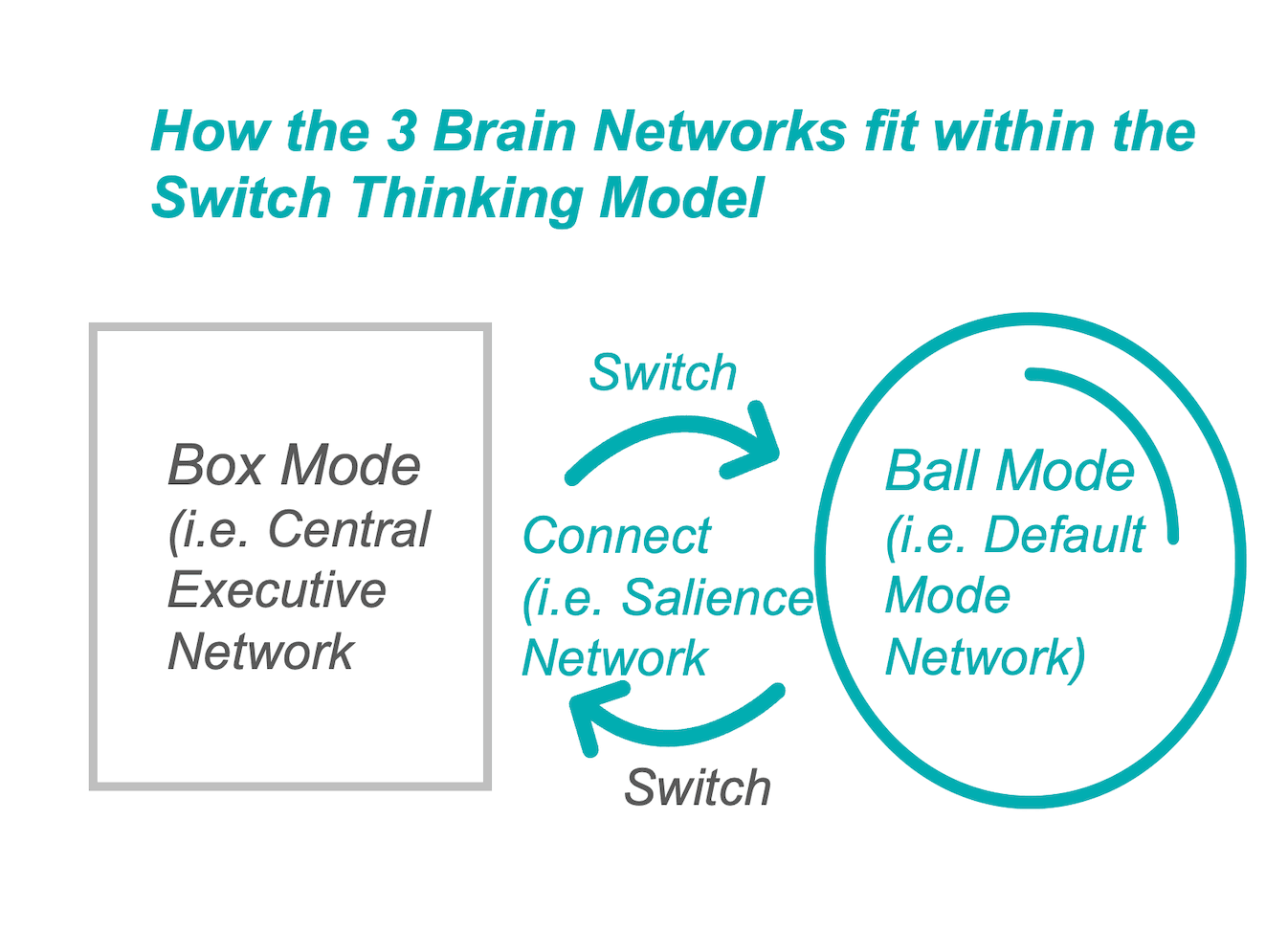I am not a neuroscientist (i.e. people who focus on the brain and its impact on behaviour and cognitive functions) but I am more and more interested in the work they do.
Partly this is due to the fact that our brain is being scanned through advanced fMRI techniques.
Which means for the first time we can look ‘under the hood’ of this wonderful yet mysterious organ.
In particular, I am fascinated by their work on the 3 Brain Networks.
This is an important point these are networks not isolated parts of the brain.
These 3 Brain Networks are:
- The Central Executive Network (CEN)
According to Wikipedia “The CEN is involved in executive function and goal-oriented, cognitively demanding tasks.
It is crucial for rule-based problem solving, actively maintaining and manipulating information in working memory and making decisions in the context of goal-directed behaviour.”
This network is Involved in goal-directed behavior, planning, decision-making and working memory.
It’s externally focused and concerned with achieving tasks and goals.
2. The Default Mode Network (DMN)
The CEN works in tandem with the DMN.
According to Wikipedia this network is “best known for being active when a person is not focused on the outside world and the brain is at wakeful rest, such as during daydreaming and mind-wandering.
It can also be active during detailed thoughts related to external task performance.”
The DMN is internally-focused and concerned with thoughts, emotions, and imagination.
The DMN comes alive when the brain is not focused on a specific task, involved in self-reflection, mind wandering, thinking about the future and creativity.
3. The Salience Network
The third broad network is the Salience Network.
In summary, the Salience Network detects and prioritizes important stimuli.
And is involved in switching.
According to Wikipedia the Salience Network “modulates the switch between the internally directed cognition of the default mode network and the externally directed cognition of the central executive network.
In short, the Salience Network is responsible for switching between the CEN and DMN as needed.
It seems that the CEN, DMN and the Salience network work together to make decisions, solve problems, create new possibilities, plan and develop goals.
Independent yet interdependent.
The networks are involved in everything it seems that make us humans.
Switch Thinking
The insight behind Switch Thinking is based on watching bilingual people switch between different languages.
I wondered if you could learn to switch languages perhaps you could also learn to switch your thinking.
In Switch Thinking I developed 2 Modes of Thinking which i called Box Mode and Ball Mode.
These are modes not people.
There is no right or wrong modes they just perform different roles.
Box Mode and Ball Mode are a short-hand metaphors to represent different yet complementary ways of thinking.
a. Box Mode:
This mode is characterized by a focused, structured, and analytical approach.
Its a rational, logical and linear approach to problem solving and decision making.
Box Mode is efficient because it relies (often) on what has worked in the past.
b. Ball Mode:
This mode is characterized by a more playful, imaginative, and exploratory approach.
It’s creative, welcomes emotion and feels energising.
c. Box Mode AND Ball Mode
In my Switch Thinking approach I also suggest that the you can switch back and forth between these two modes of thinking depending on the situation, need or level of innovation needed.
You can use these two modes to enhance creativity, problem-solving and decision-making.
By understanding and leveraging both Box Mode and Ball Mode, you can unlock your full potential and achieve remarkable results in a short time.
For example:
You can define the problem in Box Mode and develop some initial ideas.
You can also use AI as well to give you an extra boost.
Then switch to Ball mode to develop some more imaginative ideas.
Use AI as well if you need to to
Try and enhance and connect some of your ideas to make a bigger solution.
And then switch back to Box Mode to evaluate and prioritise your best ideas or solutions.
The big advantage of this process is that you are using both modes of thinking which means that you can often generate out of the box ideas that can work (and you can do).
Switch Thinking and the 3 Brain Networks:
As you can tell I am fascinated with Switch Thinking.
And what’s more important is that it works.
In my workshops and courses people amaze themselves with what they can create in a short period of time.
What i hope you have noticed is that the brain networks CEN, DMN and the Salience Network approximately equate to my Box Mode, Ball Mode and Connecting process.
This seems to suggest that Switch Thinking (without overstating the case) seems to be anchored in the latest brain science.
The benefit of Switch Thinking is that the 3 Brain Networks can become more accessible to anyone, anytime.
This is so exciting.
And because we all have these 3 networks it means that creativity and imagination is now possible, for more people, more often!

